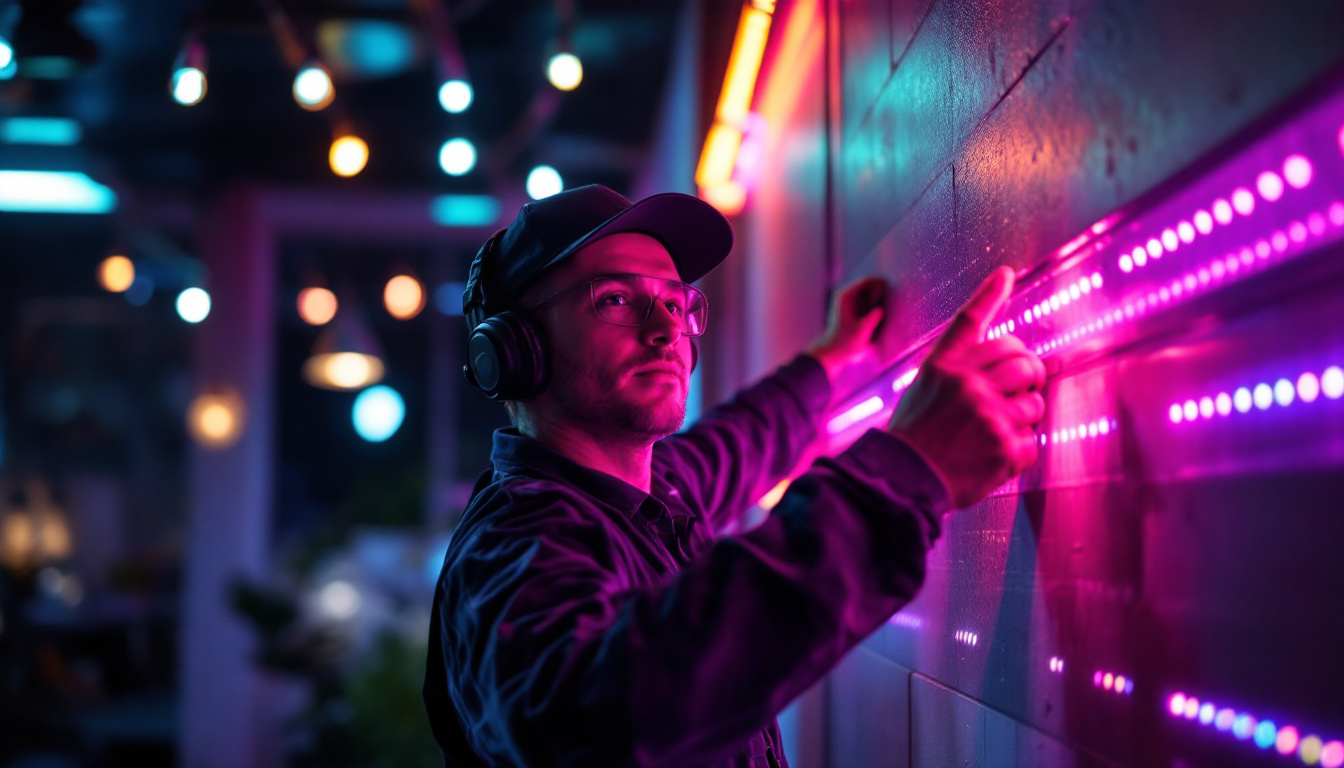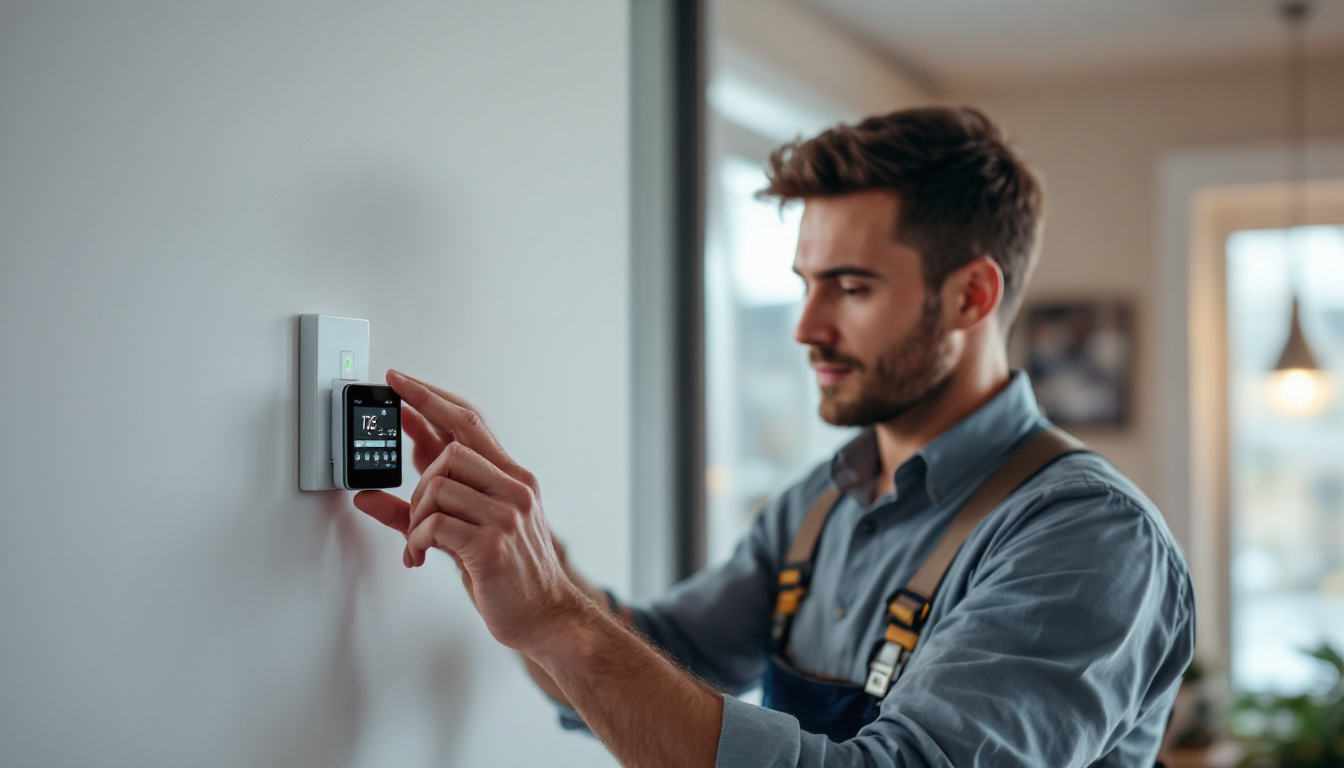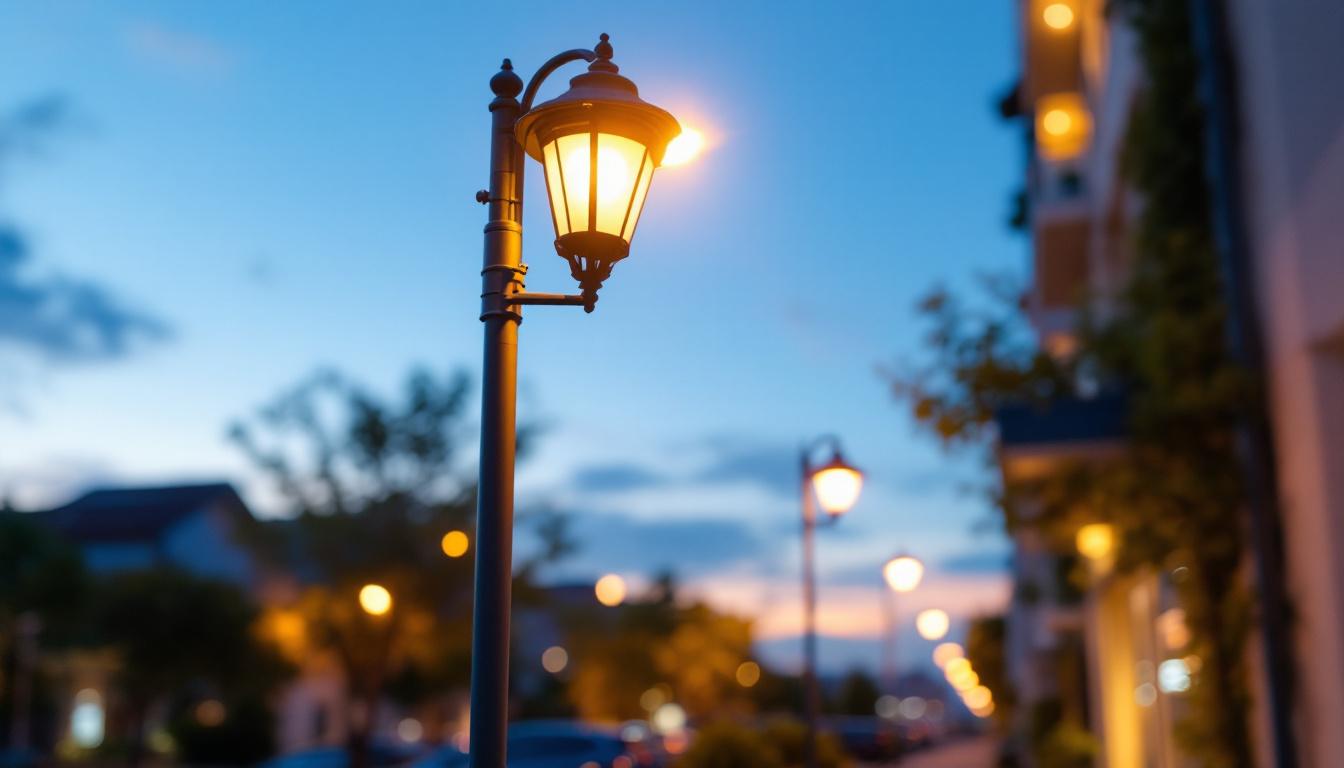
In an era where sustainability and energy efficiency are at the forefront of technological advancements, lighting contractors are presented with a unique opportunity. The transition from traditional lighting systems to solar-powered LED solutions not only enhances energy savings but also aligns with global efforts towards environmental conservation. This article delves into how lighting contractors can effectively master the shift from solar to LED, ensuring they remain competitive and relevant in a rapidly evolving market.
solar-powered LED lighting systems are gaining traction for various reasons. They offer a sustainable alternative to conventional lighting methods, reducing reliance on fossil fuels and minimizing carbon footprints. Furthermore, these systems are versatile, making them suitable for a range of applications, from residential to commercial and even municipal projects.
One of the primary advantages of solar-powered LED lighting is the significant reduction in electricity costs. By harnessing solar energy, property owners can drastically cut their monthly utility bills. Additionally, these systems often require minimal maintenance due to the durability of LED technology and the self-sustaining nature of solar power.
Moreover, solar-powered LEDs contribute to energy independence. As energy prices fluctuate, relying on solar energy can provide stability and predictability in energy costs. This aspect can be a compelling selling point for lighting contractors when discussing project proposals with potential clients. Furthermore, the installation of solar-powered LED systems can enhance property value, making them an attractive investment for homeowners and businesses alike. The initial setup costs are often offset by long-term savings, creating a win-win situation for those who choose to adopt this innovative technology.
Switching to solar-powered LED lighting systems is not just a financial decision; it’s also an environmental one. These systems significantly reduce greenhouse gas emissions compared to traditional lighting solutions. By promoting solar and LED technologies, lighting contractors can play a crucial role in combating climate change and promoting sustainable practices.
Additionally, the use of solar energy reduces the demand for non-renewable resources, which helps preserve natural habitats and ecosystems. This environmental consciousness resonates well with modern consumers, who are increasingly prioritizing sustainability in their purchasing decisions. Beyond just reducing emissions, solar-powered LED lighting can also enhance local biodiversity. By providing well-lit areas that are powered by clean energy, these systems can encourage the growth of flora and fauna in urban settings, creating more livable and enjoyable spaces for communities. Furthermore, the aesthetic appeal of solar-powered lighting can elevate public spaces, parks, and residential areas, making them more inviting and safer for nighttime activities.
To effectively master the transition to solar-powered LED systems, lighting contractors must have a solid understanding of the technology involved. This knowledge not only enhances credibility but also equips contractors to provide informed recommendations to clients.
A typical solar-powered LED lighting system consists of several key components: solar panels, LED fixtures, batteries, and controllers. Solar panels capture sunlight and convert it into electricity, which is then stored in batteries for use during nighttime or cloudy days. The LED fixtures provide the lighting, while controllers manage the energy flow, ensuring optimal performance.
Understanding how these components work together is essential for lighting contractors. For instance, knowing the right type of solar panel to recommend based on the geographical location and specific project requirements can significantly impact the system’s efficiency and effectiveness. Additionally, the choice of LED fixtures can also influence energy consumption; high-quality LEDs not only consume less power but also have a longer lifespan, reducing the need for frequent replacements and maintenance.
When evaluating solar-powered LED systems, several performance metrics should be considered. These include the efficiency of solar panels, the lumen output of LED fixtures, and the battery capacity. Contractors should familiarize themselves with these metrics to make informed decisions and provide clients with reliable systems.
For example, a higher solar panel efficiency means more energy can be harvested from the same amount of sunlight, leading to better overall performance. Similarly, understanding the lumen output helps in selecting the right fixtures for specific applications, ensuring adequate lighting levels are achieved. Furthermore, it is crucial to consider the battery’s discharge rate and cycle life, as these factors determine how long the system can operate effectively during periods of low sunlight. By analyzing these metrics, contractors can tailor solutions that not only meet the immediate lighting needs but also ensure long-term sustainability and cost-effectiveness for their clients.
Transitioning to solar-powered LED lighting involves more than just understanding the technology. Lighting contractors must also consider various practical aspects to ensure successful implementation and client satisfaction.
Before installing a solar-powered LED system, a thorough site assessment is crucial. Factors such as available sunlight, shading from trees or buildings, and the overall layout of the property can significantly affect the system’s performance. Lighting contractors should conduct detailed assessments to determine the best locations for solar panels and fixtures.
Additionally, planning the layout of the lighting system is essential. This includes deciding on the number of fixtures needed, their placement, and the type of lighting effects desired. A well-planned system not only enhances aesthetics but also improves functionality and efficiency.
Educating clients about the benefits and workings of solar-powered LED systems is vital. Many consumers may be unfamiliar with the technology and its advantages, making it essential for contractors to communicate effectively. Providing clear explanations and addressing any concerns can help build trust and confidence in the proposed solutions.
Engagement can also involve showcasing successful case studies or testimonials from previous clients. Demonstrating real-world applications and the positive outcomes achieved can further persuade potential clients to invest in solar-powered LED systems.
Successful installation of solar-powered LED systems requires adherence to best practices to ensure optimal performance and longevity. Lighting contractors should be well-versed in these practices to deliver high-quality installations.
Correct mounting of solar panels and LED fixtures is critical for maximizing efficiency. Solar panels should be installed at the appropriate angle to capture the most sunlight throughout the day. This angle may vary depending on geographical location and seasonal changes, so contractors should take these factors into account during installation.
Similarly, LED fixtures must be securely mounted to withstand environmental elements such as wind and rain. Using durable materials and following manufacturer guidelines can help ensure that installations remain intact and functional over time.
Proper wiring and connectivity are essential for the efficient operation of solar-powered LED systems. Contractors should ensure that all electrical connections are secure and that wiring is protected from potential damage. This includes using appropriate conduits and weatherproof connectors to safeguard against moisture and corrosion.
Additionally, implementing a clear labeling system for wiring can simplify troubleshooting and maintenance in the future. This practice can save time and resources, enhancing overall project efficiency.
Once a solar-powered LED system is installed, ongoing maintenance is crucial for ensuring its longevity and performance. Lighting contractors should establish a maintenance plan that includes regular inspections and servicing.
Conducting routine inspections allows contractors to identify potential issues before they escalate. This includes checking solar panels for dirt or debris that may obstruct sunlight, inspecting LED fixtures for any signs of wear, and ensuring batteries are functioning correctly.
Additionally, monitoring the system’s performance metrics can help contractors assess efficiency and make necessary adjustments. By staying proactive, contractors can extend the lifespan of the systems they install and maintain client satisfaction.
Providing excellent client support is essential for building long-term relationships. After installation, contractors should follow up with clients to address any questions or concerns. This engagement can help reinforce the value of the investment and encourage referrals and repeat business.
Offering maintenance services or support packages can also enhance client satisfaction. By being available for assistance, contractors can position themselves as trusted experts in solar-powered LED solutions.
The future of solar-powered LED lighting is bright, with advancements in technology and increasing demand for sustainable solutions. Lighting contractors who embrace this shift will not only stay relevant but also thrive in a competitive market.
As technology continues to evolve, new innovations in solar and LED lighting are expected to emerge. This includes improvements in solar panel efficiency, battery storage capabilities, and smart lighting solutions that integrate with IoT (Internet of Things) technologies.
Staying informed about these advancements will enable lighting contractors to offer cutting-edge solutions to their clients. Embracing new technologies can also provide opportunities for differentiation in a crowded marketplace.
Consumer preferences are shifting towards sustainable and energy-efficient solutions. As more individuals and businesses seek to reduce their environmental impact, the demand for solar-powered LED lighting is likely to grow. Lighting contractors should be prepared to meet this demand by expanding their offerings and enhancing their expertise in solar technologies.
Additionally, understanding market trends can help contractors anticipate client needs and tailor their services accordingly. This proactive approach can lead to increased business opportunities and a stronger market presence.
The transition from traditional lighting systems to solar-powered LED solutions presents a wealth of opportunities for lighting contractors. By mastering the technology, understanding key considerations, and implementing best practices, contractors can position themselves as leaders in the field. As the demand for sustainable lighting solutions continues to rise, those who adapt and innovate will thrive in this dynamic industry.
Ultimately, the journey from solar to LED is not just about adopting new technology; it’s about embracing a vision for a more sustainable future. Lighting contractors have the power to influence change and contribute to a greener planet, one installation at a time.
Ready to lead the charge in sustainable lighting solutions? At LumenWholesale, we support your commitment to excellence by providing spec-grade lighting products that meet the highest industry standards. Say goodbye to inflated markups and hello to superior lighting at wholesale prices. With our hassle-free bulk buying and free shipping, you can equip your solar-powered LED projects with the best value lighting—ensuring reliability and high performance without compromise. Elevate your lighting installations and join the sustainable future with Wholesale Lighting at the Best Value from LumenWholesale.

Discover how exterior hanging lights are revolutionizing the work of lighting contractors by enhancing efficiency and aesthetics.

Discover the transformative power of Light RGB LED technology for lighting contractors.

Discover the essential guide to digital timers for lights tailored for lighting contractors.

Discover essential insights for lighting contractors in this comprehensive guide to exterior light poles.